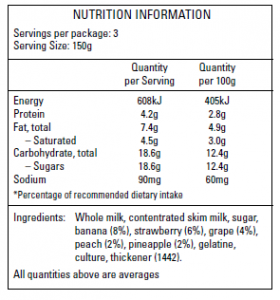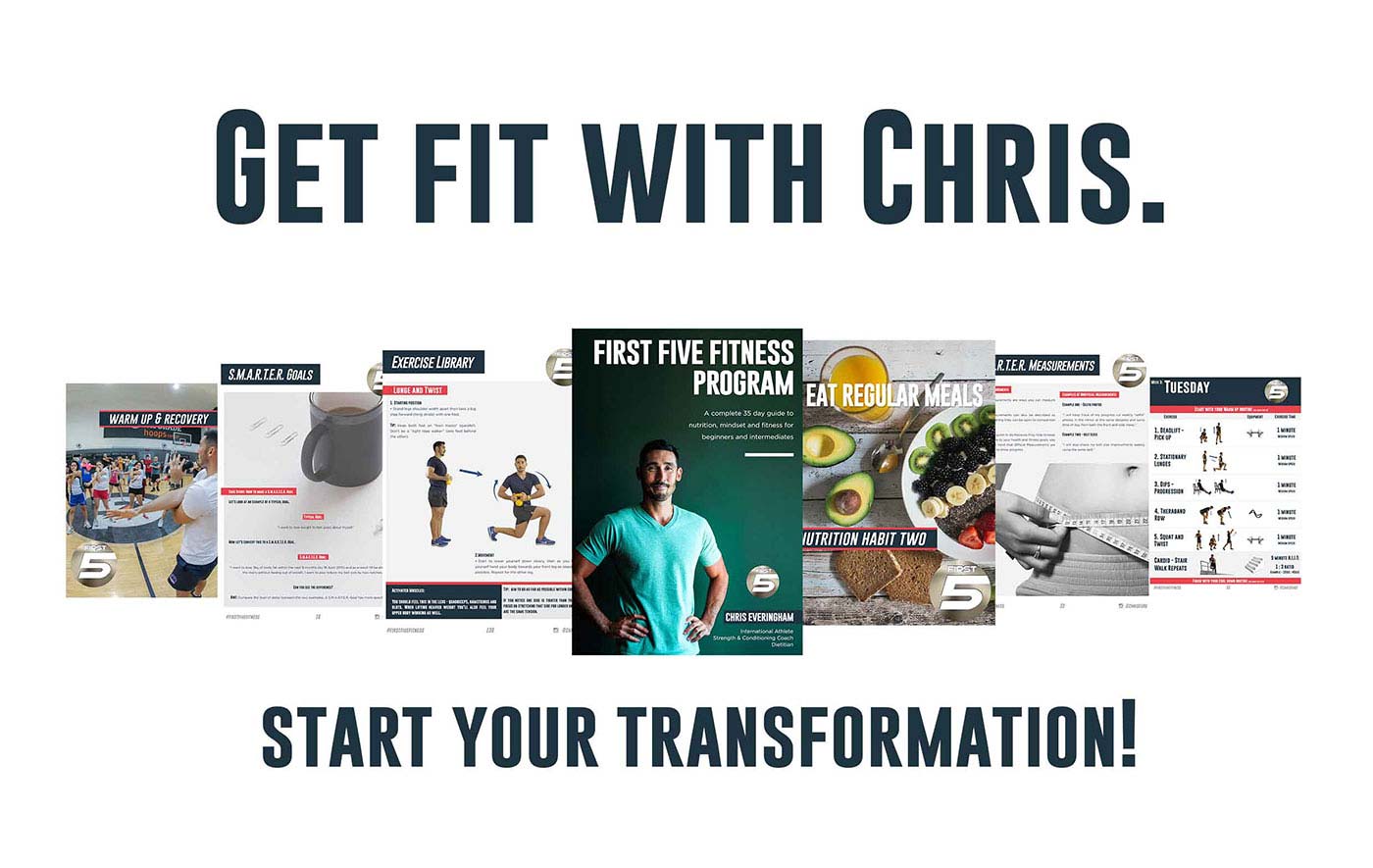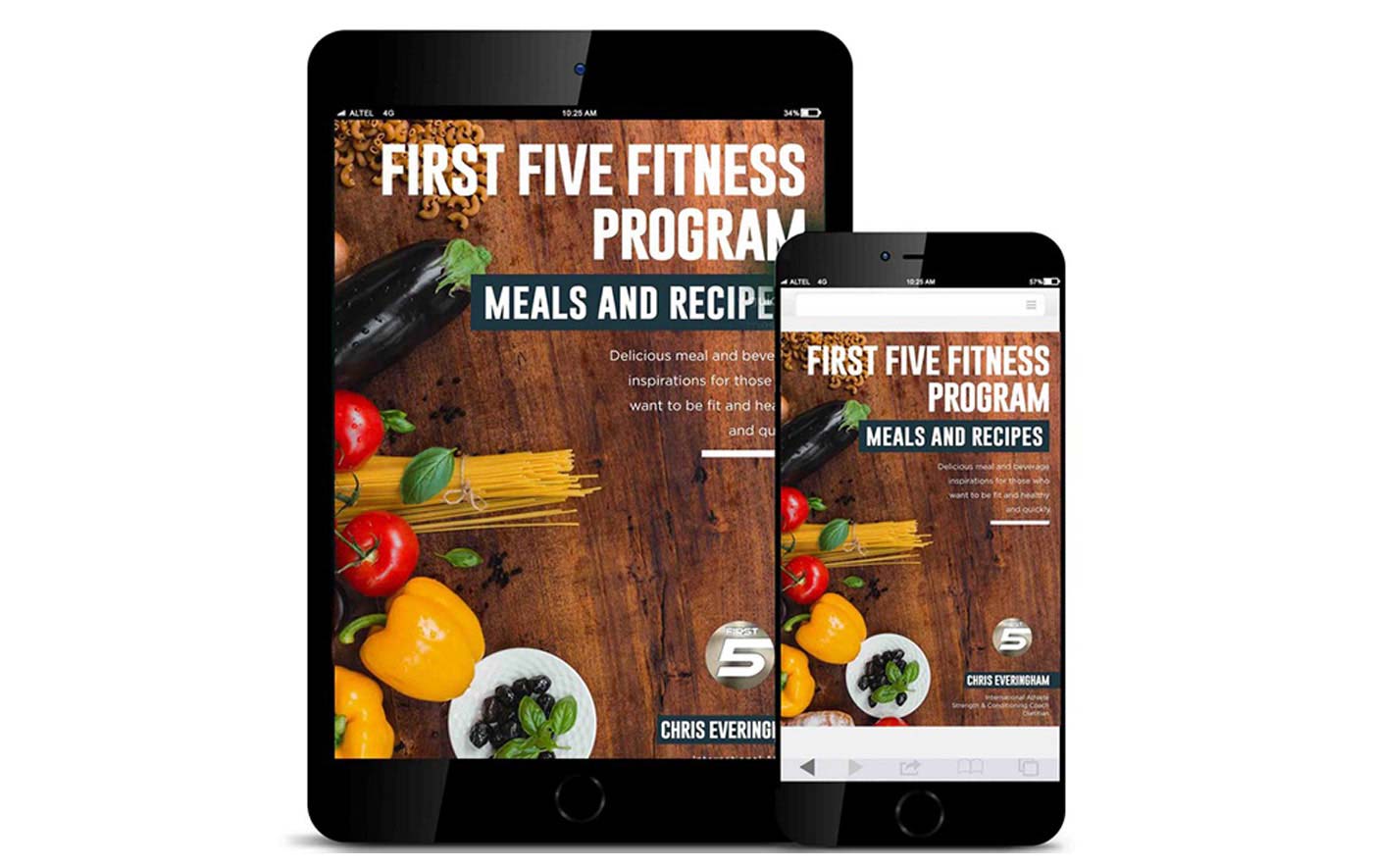The main part of the nutrition information panel
There are two or three columns on a nutrition information panel. Let’s start at the left column and move from there.
1. The first column contains the nutrition factors to consider:
- Energy
- Protein
- Fat
- Carbohydrates – Total
- Carbohydrates – Sugars
- Sodium
- Dietary Fibre
- Other micronutrients as applicable
2. The second column is the “per serve” information
This is the information in relation to the manufacturer’s serve.
3. The third column is “per 100g” information.
This nutrition information in relation to 100g. This is used to work out the percentage composition of the food item and also to quickly compare food items with similar food items. The per 100g column will help you to work out if the food is high energy, low energy, high protein, high fat, high sugar or the opposite, low sugar, low fat, low protein. It’ll also note the number of micronutrients in the product for quick comparison as well. If you don’t have the “per 100g” column you’ll have to work it out via some simple math.
Create your own “per 100g” column
For example, if the food’s suggested serving size is 35g and its corresponding energy value is 50kJ, then to find the energy value at 100g follow this equation.
Serving Size / Energy value = 100g / Energy value
Next, simplify this equation to:
SS / E = 100 / Z
where in this specific example,
SS = 35g
E = 50kJ
100 = 100g of the food item
Z = energy value that needs to be found
Input the data
SS / E = 100 / Z
35/ 50 = 100 / Z
Multiply each side by the bottom number to make them whole numbers
35 x Z = 100 x 50
35z = 5000
Divide both sides by 35 to get your Z value
35z / 35 = 5000/35
Z = 142
Therefore, the energy value in this example for 100g of the sample food would be 142kJ.
Nutrition factors to consider
This is the total theoretical energy of the food item.
This is the amount of protein in the food product. Generally speaking, the higher the protein content, the higher the fat and also in terms of food storage, the quicker the food will expire.
This is the amount of fat in the food product. If you’re on a traditional weight loss meal plan, choose a product with the lowest fat per 100g. Products less than 10g per 100g (10% fat) would be a good indicator of a food low in fat.
This is the total amount of starch and simple sugars in the food item. This will also allow you to determine the percentage carbohydrates of the food (ie. is this food high, moderate or low in carbohydrates?). This is particularly useful for those with diabetes and are “carb counting.”
This is the amount of simple sugars in the product or added to the product. These are usually higher in confectionery, snack foods, soft drinks, etc. Limit the amount of carbohydrates you consume as sugars.
Basically, this is the salt information. This is useful for those who may have heart conditions such as, high blood pressure. A good indicator of better quality food is to aim for less than 120mg per 100g and about 300mg for bread. Generally speaking, you’ll get plenty of salt in your diet, so the lower the sodium content you aim for, the better your health will be.
This is the amount of fibre in the product. A good indication of a high fibre food is about 5g per serve. To keep your bowels healthy, aim for about 30g of fibre per day. This will also help to promote weight loss as well.
Other micronutrients may be included depending on what the food manufacturer tests for:
- Iron – Good for red blood cell production
- Calcium – Used in bone formation as well as muscle contraction
- Zinc – Used in muscle recovery, reproduction of cells
- Vitamin C – Antioxidant; also used in the production of energy.
- Vitamin E – Another antioxidant used to protect the body against free radicals that may damage the body’s cells.
Inform your nutrition!
There you have it, 7 parts of the nutrition information panel that you should know! So now when you’re told to, “Start watching what you eat!” you can reply with confidence that you got it covered! Whether it be to promote healthy weight or something more complex like diabetes or cardiovascular disease, understanding nutrition information panels is an essential skill to know and will take the stress and frustration out of everyday eating. Manage your nutrition right to boost your health!
–
Need extra help?
- My PURITY Protocol is an amazing resource packed with 6 secrets to detox your life and supercharge your energy. It’s my personal wellbeing philosophy. Check it out here.
- The First Five Fitness program is a complete 35 day guide to nutrition, mindset, and fitness for beginners and intermediates AND it only takes five minutes blocks to start. Click here for details.
- Don’t know what or how to cook and prepare food?! Check out My Meals & Recipes book here. It’s packed with loads of practical, healthy and simple to make breakfast, lunch, dinner options as well as snacks and drinks.
- Want live coaching? Click here to contact me. I look forward to working with you soon.
–








